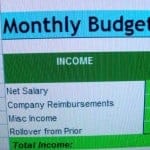Oftentimes, saving money can seem like such a chore. However, it is necessary in order for one to truly gain control of their finances. Since saving money ultimately means reducing current consumption (not getting all you want today), it usually takes a back seat in our financial management. Which is why we need to consider ways to automate savings.
Most of us hate the idea of taking a chunk of money and putting it aside for sometime in the future, because that means we probably have to “deprive” ourselves of something we want now! Using an automatic saving method, can really take the sting out of preparing for the future.
Quick Navigation
Direct Deposit Into Savings
Most employers offer direct deposit as an option for employees receiving pay. Some even offer the option to split your paycheck among several banks. The best way to automate your savings is to have it deposited directly into your savings account. That way, you don’t have to deal with the temptation of spending it, nor the heartbreak of not spending it.
If you have your account in another bank, it makes it easier for you to build up to your goal without having to look at that growing balance each week.
If your job doesn’t give you the option to deposit your check into separate banks, you still have a couple of options. You can either have it all go into your checking account, and then set up an automatic transfer to your online savings account (this is how I currently have things set up), or simply use the savings account at your normal bank, and exercise discipline!
No matter which option you choose, the goal is to get the money into your savings account without it having to “touch” your hands. This is essentially what you are doing when you take advantage of the high 401k contribution limits by moving money from your paycheck before it ever reaches your hands!
Schedule Periodic Transfers
If getting direct deposit isn’t an option for you, be sure to set up transfers to your savings account periodically. You can set these up to match your pay dates, or you can schedule them on a different pattern – such as once a month.
You can also decide to take any excess money which you have – if you come in under-budget for a month or quarter, for instance – and put it in a savings account. If you notice a pattern with this “extra” money, then start to automatically transfer it out of your account periodically.
This is also a great way to build up your retirement savings. If you have extra money, and you haven’t reached your IRA contribution limits, use it to start saving for retirement!
Save Money With Your Spare Change
I remember when I used to pay for everything with cash. I would always empty the change out of my pockets and put it in a bottle. Once the bottle was full, I would either roll the coins or take them to Coinstar (once that came around). Well, some banks have programs that mimic this type of savings pattern.
My current bank allows me to build up my savings by using the “change” from my purchases. Every time you make a purchase with your debit card, the total is rounded up to the next dollar, and the difference is deposited into your savings account.
For example, if you buy an item that costs $55.19 on your debit card, your bank will charge you $56.00 and deposit the additional $0.81 into your savings account. This works extremely well if you use your debit card often. Personally, I never carry cash so this has worked out great for us.
Every time I go to a restaurant, I use my debit card and give enough of a tip to bring the grand total up to $xx.01. For instance, if the bill is $28.14, I may give a tip of $4.87 (part of why I hate tipping etiquette), so that the total will be $33.01. Then the bank will charge $34.00 against my checking account and transfer $0.99 into my savings account.
I’ve had this going for a few years, and I’ve managed to save about $900 through this system. It would be worth it for you to see if your bank offers this program as well.
Saving Money Using Credit Card Rewards
Yes, those hated credit cards can actually help you with your savings. Many banks will offer credit card benefits which includes cash back on most purchases. Once you accumulate a significant amount of cash, use it to pay for a purchase, and put the money you would have spent into savings…unless your bank gives you the ability to withdraw your cash reward and deposit it into your savings account.
This works really well, if you pay every bill with your credit card. Set up your utility, telephone, cable, internet, cell phone, and insurance bills to be paid each month by credit card – add your car note and rent/mortgage if possible! This way you will build up a substantial amount of cash in your account to add to your savings.
Of course, this only works if you have good enough credit to be given an reward card – if you need a cosigner for a loan, you probably won’t qualify for this. Also, if you have had problems with using credit cards responsibly and paying them off each month, be careful when using this method.
Ignore Raise, Bonuses, And Surprises
Here is a pretty popular technique. Whenever you get a raise, take your increase and put it directly into savings. This way, you continue to live off of the same amount, but you are able to build up your savings account. The premise is the same as with the direct deposit method, if you don’t see it, you won’t miss it.
Do the same for any bonuses that you receive. Also, if you receive a refund each year from your tax preparation, that is a great way to add a large amount to your savings account in one shot!
Basically, anytime you receive money for which you didn’t budget, or are not depending on for your everyday needs, put it into savings immediately before you begin thinking about what you can buy with it! It is almost as if you have to trick yourself into saving money!
Reader Questions
- What methods do you use in order to build up your savings account?
- Do you use your credit card to pay monthly expenses, just for the benefits?
- Do you ever have a problem with putting money aside for savings – especially when you consider what you can buy?





Really dig the scheduled periodic transfers, hadn’t given that one any thought, but I believe I will look into setting this up, thank you!
We do transfers into our savings from checking at the end of every month. This money goes to saving for big purchases and to pay future bills that only come several times per year (i.e. insurance, taxes, etc.)
There is an app with regards to your change and tipping idea above, I forget the actual name but the concept it very need. I use a change jar. I donate the small pennies and dimes but keep the quaters for my jar
The bank letting you round up is a GREAT idea! What banks offer this? That is worth switching for me…
These are great ideas. Your change jar can be quite helpful. By the way, I can tell you that air miles work. I have just been to far east for free thanks to my air miles.
Also, many people get outside contracts once in a while. It would be nice to put them into your savings account. Think about all those compound interest over the years.
Great tips Khaleef we have a huge jar of change that I think I’ll take to the grocery store one of these days and cash in for a store gift certificate, no service fee if you go that route.